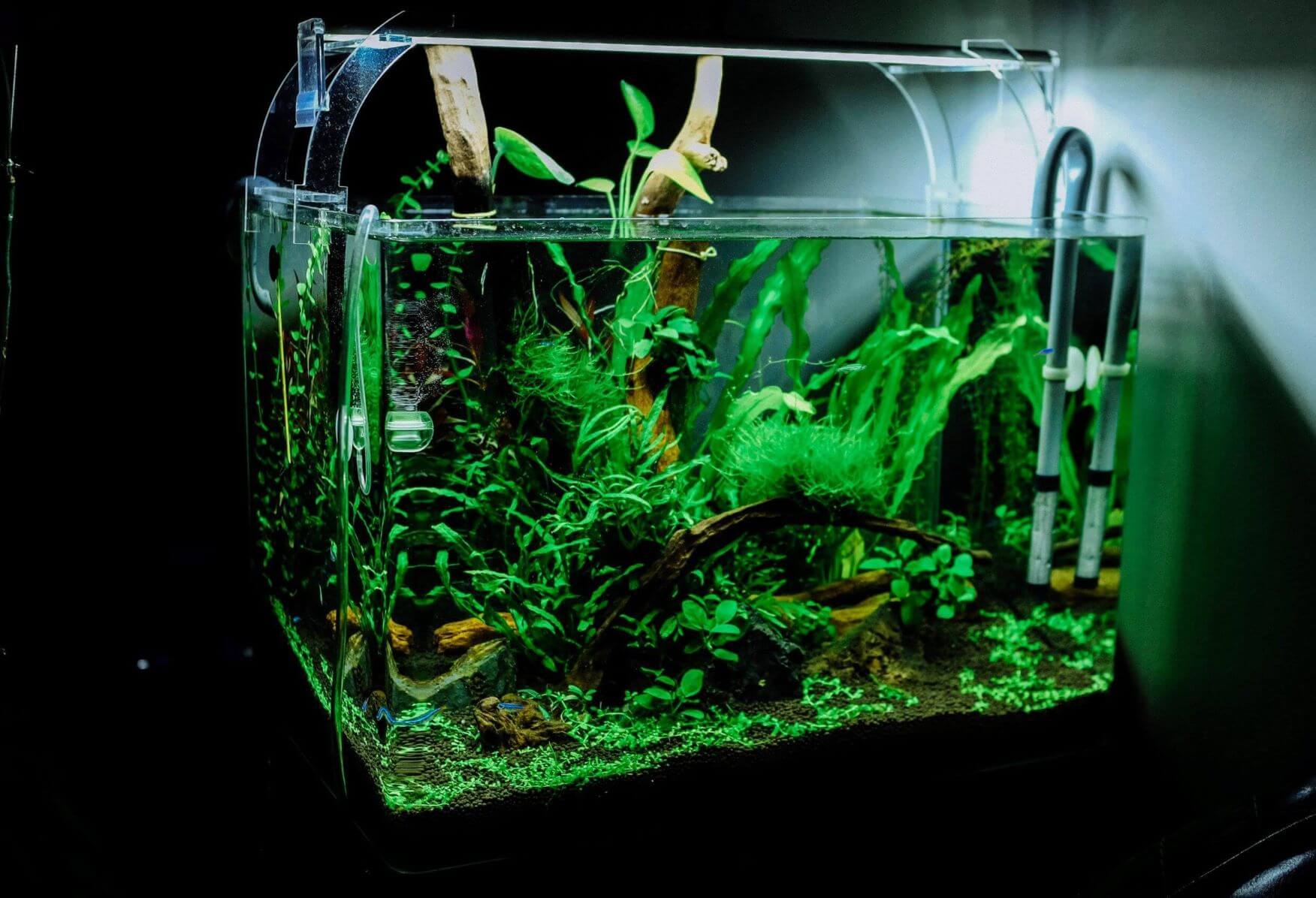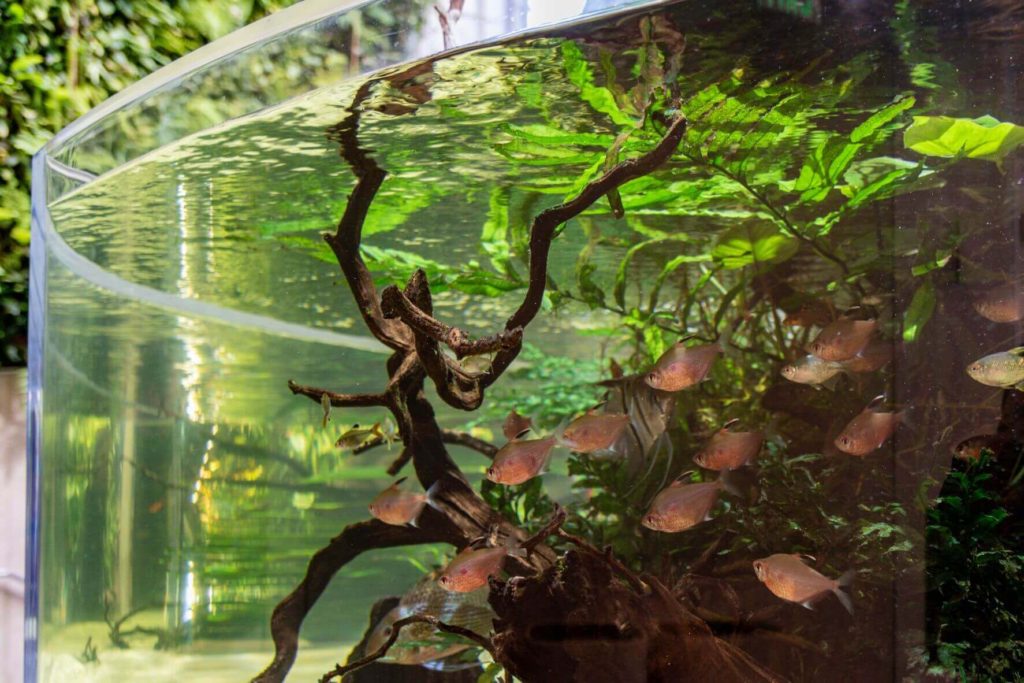When it comes to pet care, one of the most critical aspects is nutrition. This is why many people invest in automatic fish feeders – they want their pets fed without remembering to do so all the time.
Unfortunately, fish can be finicky eaters, and some owners find they are constantly feeding them because they prefer certain types of food over others. But with an automatic fish feeder, there’s no need for you to worry about this. We will find out what is the best automatic fish feeder.

How Do I Feed My Fish When I Go On Vacation?
Automatic fish feeders are gaining popularity as people who own aquariums become more and more interested in maintaining their pets rather than simply purchasing them as a novelty.
There are many automatic fish feeders on the market that you can choose from, but it’s essential to select one that fits your needs and is easy for you to use, so there isn’t any work involved other than mounting it.
What Type of Fish Feeder Should I Use?
If you need to feed your fish when you go on vacation, then an automatic fish feeder is the best option for you. This will ensure that they are fed without any issues or concerns while you’re away, and it doesn’t cost much in comparison to hiring a pet sitter either.
There are many types of automatic fish feeders available right now. We’ll discuss options, how each one works, which ones can be used with different kinds of food, etc.
How Much Does An Automatic Fish Feeder Cost?
The cost varies depending on the brand, size, design, and if it is battery operated. For example, most automatic fish feeders will cost at least $20, whereas some can be up to a few hundred dollars.
- Are Automatic Fish Feeders Expensive?
Automatic fish feeders are not expensive by any means. Still, you do get what you pay for in most cases – something that works well with minor issues or concerns rather than purchasing one cheaply that may end up breaking down after several months of use or doesn’t work correctly.

Varying on the features and the brand, the cost is also going to vary. Many of them are in the $20-$30 range, but some can be up to a few hundred dollars or more depending on their features and quality.
The best choice for you will depend on your needs and what kind of fish food it’s compatible with since not all automatic fish feeders work well with different types of food – make sure you research before you purchase one.
What Fish Food Can An Automatic Feeder Handle?
There are different types of fish food based on your fish’s dietary preferences. For example, some fish prefer flakes while others will eat pellets or wafers instead.
- Which Fish Food Can an Automatic Feeder Handle?
An automatic fish feeder can handle all different types of food as long as they are small enough to fit into the hopper, which is located on top of the unit where you load it up with your pet’s favorite type of food.
Many people have a common problem when looking for a new automatic fish feeder involves compatibility – what kind of food does it use, and is there any way I can change this if my pet prefers something else? Of course, the answer depends on the brand, but most units work well with various kinds, including flaked foods, pellet foods, and wafers.
Do Automatic Fish Feeders Work With All Brands of Food?
Some automatic fish feeders only work with certain brands or types of food, but this is not common. For the most part, they can be used with many different kinds such as flakes, pellet foods, and even freeze-dried ones, although you may need to take out a few pieces since it won’t automatically feed your pet if there are too many in one serving size (which means more waste).
Which Automatic Fish Feeder Should I Get?
To find the best fish feeder for your needs, several factors must be checked before making a purchase:
How much do you want to spend on the fish feeder? What is the best automatic fish feeder? The price varies depending on various factors such as size, weight, and capacity. For example, if you have more than one aquarium, an automatic fish feeder that can be programmed for several feeding times may help save time, so it is worth considering investing in a highly functional model.
You should also check whether it has additional features such as email alerts or text messages when your pet needs food. If you opt for this type of device, remember to test its capabilities first and make sure they meet your expectations (e.g., sending notifications that arrive at different times). Another important aspect related to the cost of these devices is battery life; cheaper models usually have shorter battery life.

What kind of automatic fish feeder do you want?
Automatic Fish Feeders can be divided into three main types:
- Drip, which delivers food slowly with gravity;
- Cartridge dispenser that is similar to what humans use for pills and capsules;
- The user programs Time-release models to drop small amounts of food at predetermined times (e.g., every hour).
Drip: This model has some drawbacks, including requiring refills more frequently than other types of devices. If you opt for this type, you should consider buying a device attached to the aquarium’s filter system.
This way, food particles are broken down more quickly, and they do not accumulate in your tank or filter, which means you will have to change water less frequently.
Cartridge: These models are very similar to what humans use for pills and capsules; however, they must be installed vertically, so it is essential to check whether the model has this feature before purchasing as some devices may fall over if placed horizontally.
Another problem with cartridge feeders is that fish cannot eat all of the food contained within one feeding session. Still, these types of automatic fish feeders allow users to adjust their settings accordingly so you can control how much falls into your tank at each time interval (e.g., every hour).
 Time-release: The user can program these models to drop small amounts of food at predetermined times (e.g., every hour), which means you will have to refill them less frequently than drip or cartridge feeders.
Time-release: The user can program these models to drop small amounts of food at predetermined times (e.g., every hour), which means you will have to refill them less frequently than drip or cartridge feeders.
However, it is worth remembering that fish cannot eat all of the food contained within one feeding session, leaving a device with an open slot. This may result in overfeeding your pet as these types of automatic fish feeders can dispense more food if they sense for any reason that their lid was left open too long.
How Long Do Batteries Last In A Fish Feeder?
Fish feeders can be battery-operated or plug-in. The battery lasts for about a year, and the plug-in is either AC or DC, so it can be powered by an inverter if necessary. Most battery-powered feeders can be programmed to feed your fish up to four times a day.
The AC and DC-powered automatic fish feeders can also trigger multiple feeding times per day, but you need an external timer not included with the feeder.
How To Avoid Common Mistakes When Using An Auto-Feeder?
- First, you need to know if your fish feeder is meant for pellet or flake food. If it’s a pellet feeder, you should opt for the automatic fish feeders that come with adjustable portions.
- Second, get to know how much food your aquarium requires per day and then divide that number by the portion size of the auto-feeder to over-fill it.
- Finally, make sure you don’t overload your battery which can damage its life expectancy significantly.
Most batteries last longer when powering up low voltage devices such as LED lights but less on high power appliances like heaters or pumps. Therefore consider buying an AC/DC-powered model instead of relying solely on batteries to avoid having issues later on.
Final words
The best automatic fish feeder for your needs should have adjustable portion sizes, be battery-powered or AC/DC powered, and have a memory that lasts at least one year. You should also avoid overloading your automatic fish feeder with pellets to not damage the life expectancy of your batteries. Make sure you don’t overload them either by feeding too many times per day, which can cause issues later on.

